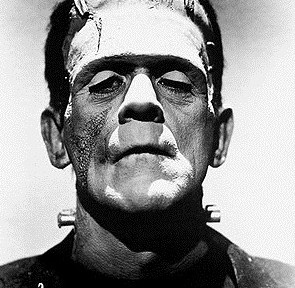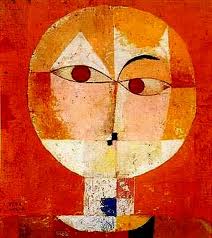We attribute meanings to the things in our life based on what motivates us. And we’re motivated by what we think we are. I’ll clarify those concepts later on, but first I want to make it clear that our ability to think about what we are doesn’t require us to have free will in the truest sense. Just as well, because none of us actually has it. Our ‘free’ will is a manufactured product of our circumstances. You don’t choose to be what and who you are, or even what you do. Those things are all decided for you.
From the day you’re born, you’re trapped inside a body designed by genes over many millions of years for one purpose only: to ensure those genes get copied and reproduced. All the major decisions about what you are physically have already been made by that process.
What about who you are? The non-physical stuff? Your thoughts, memories, ideas, opinions, fears, hopes, dreams, aspirations and so on? Obviously those all arise from your conviction that you’re a physical body in a physical world. They’re also a result of what your body and brain, were designed for, the way they were designed, and the materials used. All of those factors have a near total influence on the subconscious parts of your mind, and thus the way you think and feel – about everything.
In other words, all of your thoughts, memories, ideas, opinions, fears, hopes, dreams, aspirations and so on, are the result of genes and their blind, mindless efforts to get themselves copied and reproduced. Mindless, that is, until you came along believing you were the body, brain and mind that genes built, for themselves. (And it took you a couple of million years to even figure out what genes are and how they work.)
Because your thoughts, memories, ideas, fears, hopes, dreams, aspirations and the rest are all concocted in a brain built by many millions of years of genetic replication and reproduction, you’re now stuck in a designer reality, built by genes for genes. But you think of it as your human reality. Human society, like all other organism societies, is a product of the conviction that being in a physical body is the way things are meant to be, and so far as insentient bits of protein called genes are concerned, it is.
Just don’t run off with the idea that how you want things to be, is somehow separate from the way genes want it to be.
And then there’s God. Ideas about God are side-effects of the instinct to survive as genes, for genes, in a material world. Believing that your beliefs are inviolate is itself a defense mechanism to protect your survival as genes. Naturally you won’t think so, but remember what designed and built the brain and mind that your thoughts and beliefs are coming from, and why. You’re made from physical components, shaped by laws of physics into a gene-survival suit…and you’re kidding yourself there’s an all-knowing, all-powerful ‘something’ behind it all? Even more delusional, you imagine you know what this ‘something’ is?
Not only are ideas about God indivisible from the survival instinct – for real reasons just outlined – they’re fashioned from materially real imagery. Human minds in physical bodies are incapable of comprehending a reality not built on physically real phenomena, or conscious interaction with it. In other words, your ideas about God are fashioned from your painfully limited understanding of yourself and your place in a physical reality.
What about the environment? We know of just two fundamental phenomena in our cosmic environment: physical things, and consciousness. The only consciousness we know of is our own. Physical stuff is just that, whereas consciousness is immaterial. It has no physicality. Yes, consciousness is assumed to be made by atoms in a brain, but it’s not made from brain atoms. There is no atomic structure of consciousness. There are no molecules in an idea.
And yet ideas are all and everything that we are – along with thoughts, memories, assumptions, fears, hopes, dreams, aspirations, delusions, pretensions, etc, etc. Put all those together and we appear. Take ‘em all away, and we cease to be, leaving only the shell that genes built.
Now forget genes and bodies and brains. They’re not what we are, they’re only what we imagine we are. Our bodies are merely part of the physical environment we were born into. We mistake ourselves for them only because they enable us to exist as consciousness in their physical environment. Immaterial though we are as consciousness, our thoughts, memories, ideas, fears, hopes, dreams, aspirations, etc. are able to translate physicality into so much more than atoms and molecules…by giving physical things meaning.
As consciousness, we’re a separate environment made from our own and each others ideas, thoughts, memories, fears, hopes, dreams and aspirations. Our real environment became exclusively one of immaterial mind stuff when we became conscious of being conscious.
The physical sensations we ‘feel’, along with ‘our’ emotions, are generated by chemical interaction in a non-conscious genetic body, nervous system and brain. As consciousness, we only identify with those chemical interactions in terms of the ideas – the meanings – they help us conjure up about ourselves.
‘Sensations’, ‘feelings’ and ‘emotions’ are illusions we perceive as real only because our immaterial conscious self is so closely interfaced with a material body, nervous system and brain. The nature of this interface translates physical sensations into consciousness for us, otherwise we’d be unaware of them.
As the environment of ideas within a material environment, our reality is fast becoming less about what the physical environment makes us, and more about what our ideas make it. We pervade these biological vehicles as an immaterial phenomenon; we really are the ghost in a biological machine. Though as aspects of the environment of consciousness, rather than think of ourselves as indeterminate parts of an amorphous cloud of vapor, say, we each have a distinct existence as a core self made from a unique set of ideas.
Our personal core self is constantly reshaped by outside influences that affect us consciously and subconsciously. We evolve as a result of the ideas – and meanings – we’re constantly interacting with. And while our conscious selves evolve, the genetic bodies we’re in evolve too.
But it’s meaningless to say that we’re how genes – or even the physical universe – became conscious; no two phenomena are so different from each other as physical matter and consciousness. We were never physical.
What does all of this mean? Regardless of what we believe about our origins, as conscious minds caught up in genetic hardware, it’s for us alone to decide what it means to be conscious, in a physical human body, in society, in a material world. Finding meaning for ourselves isn’t something our genetic bodies are capable of; meaning is unique to us as consciousness; that should be obvious.
Ideas about God or an afterlife are consistent with this search for meaning. Perhaps they’re inevitable. But whatever we choose to believe, the hard fact is that while we’re here, as consciousness in a material world, this is the only world we, as human beings, can perceive or have ideas about.
We’re simply not designed to have ideas about any other kind of world than a material one; in a material body and brain, our mindset is anchored in our subconscious identification with our perceived material self. It’s also a delusion that we can imagine a world, a reality, in which our own conscious motivations are free from the instinct that motivates us to survive as physical beings.
As said, part of that same delusion is to imagine we can separate ideas about God from the instinct to survive in a material world. We demonstrate that by using the God concept as a tool or a weapon that works to our own advantage, allowing us to see the meaning in things that we choose to see. This is survival-oriented ‘meaning’, reflected in all our thoughts and actions; in what things are worth to us and why we value them.
We can’t be relied upon to decide impartially about meanings or values. Our entire understanding of value judgement evolved to favor things that mean the most to us, and – for all the reasons touched on above – nothing means more to us than our survival as genes.
Yet we need meaning in our life – in fact an endless series of small ongoing meanings that make an overall meaning. Meanings give our existence a purpose. The problem is that we’re immaterial consciousness existing in a physical world, the most immediate aspect of which is a physical body we claim as our own, and in doing that, lose our real selves.
In a physical body, we think – instinctively – of ourselves and our survival in physical terms and look for what physical things mean for our survival as physical beings. But in our true environment of consciousness, the things we value most in the physical world are not physical; they exist only as ideas, hopes, dreams, aspirations, awareness, understanding, etc.
Tread carefully here, because though our hopes, dreams, fears, aspirations and ideas are about what physical things mean to us, they’re not about what physical things mean to our physical selves; nothing has ‘meaning’ for the atoms and molecules of our physical selves. Our hopes, dreams, fears, aspirations and ideas are exclusively immaterial, and so can only ever be about what physical things mean to us as immaterial consciousness.
Be more of what you really are. The value we place on physical things is part of the illusion we unwittingly create for ourselves. The real purpose of our conscious presence in this physical environment is to transform physical things into a dynamic collection of immaterial ideas that transcend the physical world. That goes for our ideas about our physical bodies too. Thus transformed, physical things cease to have value only as divisive life support for genes, and instead, in our immaterial minds, become only about the conscious meanings we choose to give them – meanings that can only have ‘meaning’ for consciousness.
Physical things then become a reflection of us and our purpose – to make the most of what we really are: something far more than mindless and uncaring physical matter that has no meaning for itself. The meanings we choose to give physical things are the meanings we choose to give ourselves and each other, rather than the lack of meaning placed on us by physical matter.
When we think of ourselves as physical beings first, we naturally downgrade what we really are – our real, conscious selves – and instead chase the objects and experiences that feed our illusions about ourselves as physical beings. We allow mindless, uncaring stuff to call the shots. We all do it, imagining this will benefit our conscious selves too, but it has the opposite effect.
As conscious beings, only we can decide the value of things. But because the physical things of our environment affect the quality of our life and our fate as physical bodies, we allow them to decide the value we put on ourselves and each other, period.
While we base our values on physical things, we judge the value – the meaning – of ourselves and each other as conscious beings in terms of the relative value we place on physical stuff.
Do we really want the meaning of our existence to depend primarily, or only, on the value we put on physical things? How we use them, share them, distribute them, withhold them, covet them, beg, borrow or steal them?




